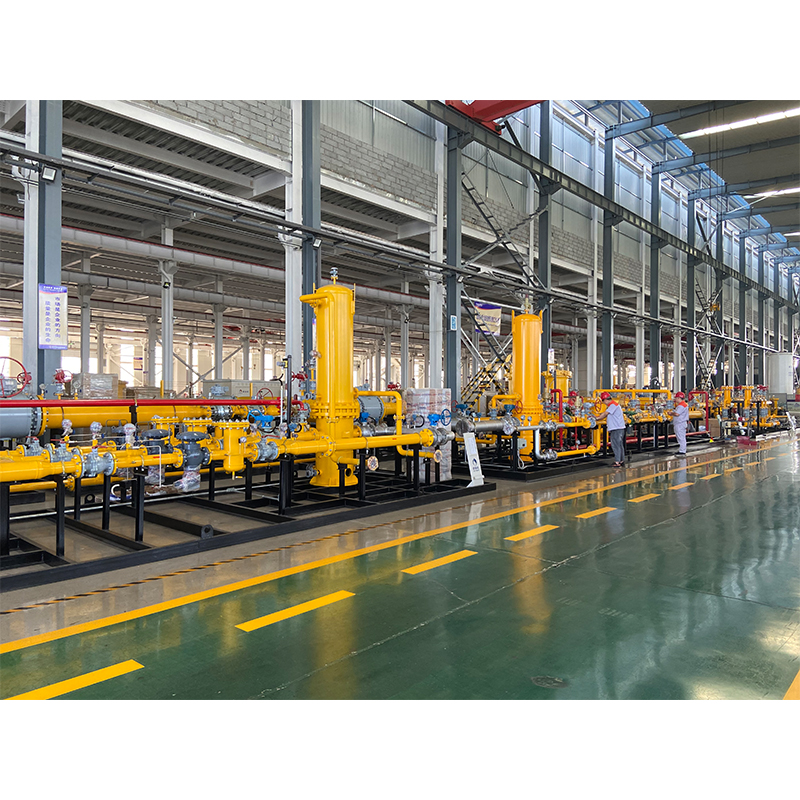
Nov . 20, 2024 19:39
Back to list
shut-off valve
Understanding Shut-Off Valves A Key Component in Fluid Control
Shut-off valves are instrumental in various mechanical systems, serving as essential components for controlling the flow of liquids and gases. Their primary function is to either permit or restrict the flow, making them crucial in a variety of applications such as water supply systems, oil and gas pipelines, and HVAC systems. This article delves into the mechanics, types, applications, and importance of shut-off valves in modern engineering and plumbing systems.
What is a Shut-Off Valve?
A shut-off valve is designed to completely stop the flow of a medium through a piping system. It can quickly isolate a section of the system, allowing for repairs, maintenance, or system changes without needing to drain the entire system. Shut-off valves can be operated manually or automatically, depending on their design and application.
Types of Shut-Off Valves
There are several types of shut-off valves, each suited for different applications and environments. Here are some of the most common types
1. Gate Valve This valve operates by lifting a gate out of the path of the fluid. It is generally used in situations where a straight-line flow of fluid and minimal restriction is desired. Gate valves are suitable for full-flow applications but are not ideal for throttling.
2. Ball Valve A popular choice in many industries, the ball valve consists of a spherical disc that controls the flow. When the ball is rotated 90 degrees, it either allows for complete flow or stops it entirely. Ball valves are known for their durability and quick operation.
3. Globe Valve This valve features a spherical body and is excellent for throttling flow. It uses a movable disk and seat to control flow, making it a good choice for applications requiring precise control. However, globe valves can create more friction loss compared to other types.
4. Check Valve While primarily used to prevent backflow, check valves can also function as shut-off valves in certain situations. They automatically close when the fluid starts to flow in the reverse direction, thus safeguarding the system.
5. Butterfly Valve This type uses a rotating disc to regulate flow. Butterfly valves are compact and lightweight, making them ideal for large volumes of fluid. They are commonly used in water supply and wastewater treatment systems.
shut-off valve

Applications of Shut-Off Valves
Shut-off valves are used across diverse sectors, including
- Plumbing and Water Supply In residential and commercial plumbing, shut-off valves allow for the control of water within the system, facilitating maintenance and emergency repairs.
- Oil and Gas In the oil and gas industry, shut-off valves are critical for managing the flow and pressure of hydrocarbons, ensuring safety and operational efficiency.
- Heating and Cooling Systems In HVAC applications, shut-off valves help regulate hot and cold water systems, contributing to energy efficiency and system performance.
- Chemical Processing In many industrial processes, shut-off valves are employed to handle the flow of various chemicals safely, ensuring containment and control.
Importance of Shut-Off Valves
The significance of shut-off valves cannot be overstated. They provide vital safety mechanisms in various systems by preventing leaks and ensuring that media flows in the correct direction. Their role in enabling maintenance activities without service interruptions is crucial for operational efficiency.
Additionally, the choice of valve materials—typically brass, stainless steel, or plastic—plays an essential role in their performance and longevity. Factors such as temperature, pressure, and the type of fluid or gas being controlled must inform the decision-making process when selecting a shut-off valve.
Conclusion
In summary, shut-off valves are critical components in fluid control, serving as reliable gatekeepers in numerous systems across industries. Understanding the various types and their applications can aid in making informed decisions when designing, installing, or maintaining plumbing and industrial systems. By ensuring the proper flow and safety in pipelines, shut-off valves continue to be fundamental to modern engineering and infrastructure.
Next:
Latest news
-
Safety Valve Spring-Loaded Design Overpressure ProtectionNewsJul.25,2025
-
Precision Voltage Regulator AC5 Accuracy Grade PerformanceNewsJul.25,2025
-
Natural Gas Pressure Regulating Skid Industrial Pipeline ApplicationsNewsJul.25,2025
-
Natural Gas Filter Stainless Steel Mesh Element DesignNewsJul.25,2025
-
Gas Pressure Regulator Valve Direct-Acting Spring-Loaded DesignNewsJul.25,2025
-
Decompression Equipment Multi-Stage Heat Exchange System DesignNewsJul.25,2025

